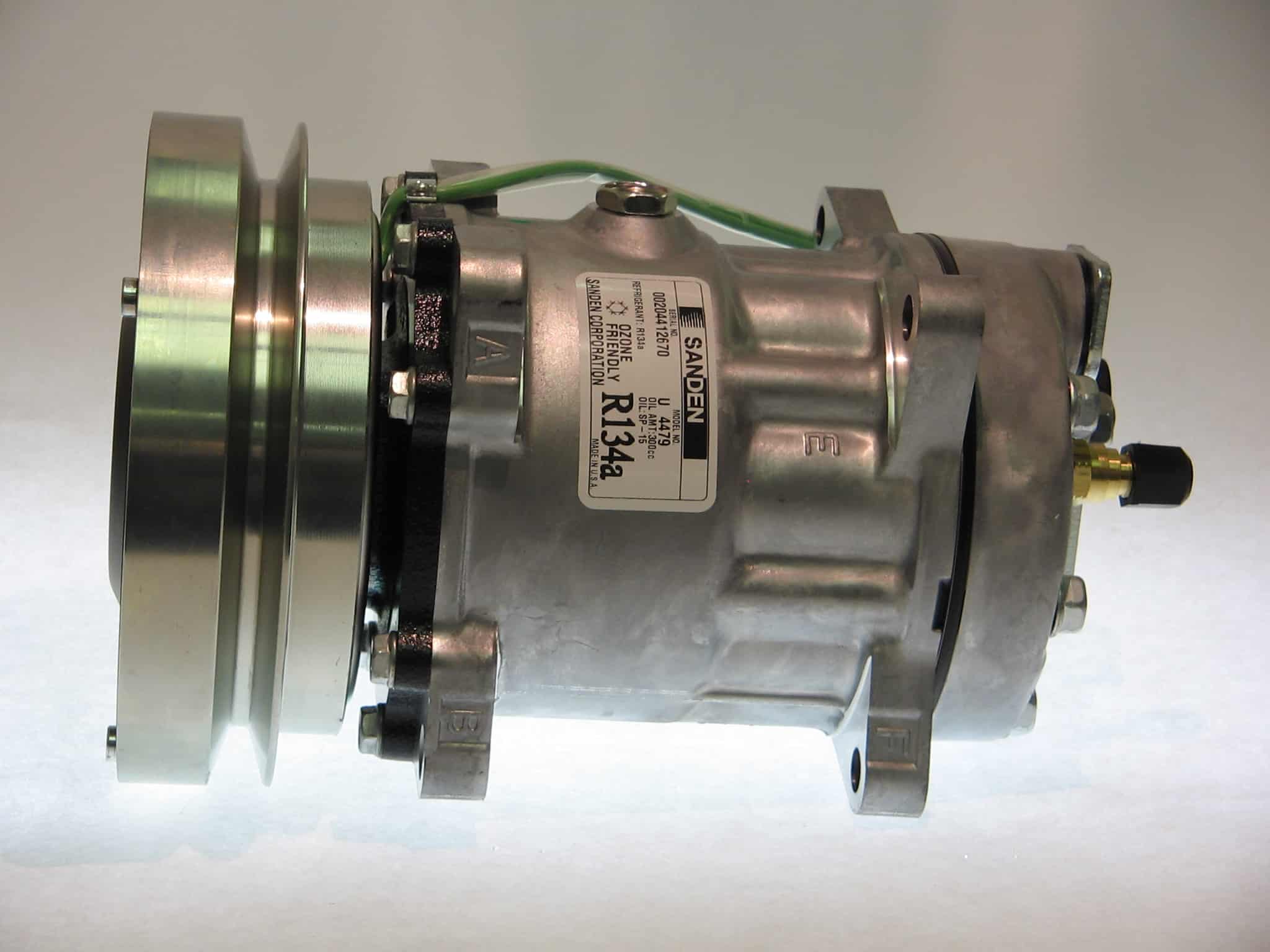Piston Compressors

There are two types of piston compressors currently in use, the opposed axial type, (also often referred to as the swash plate type), and the single row axial or wobble-plate type. Depending on design, these compressors may contain five, six, seven, or ten pistons.
With either type of piston compressor, the pumping action of the pistons draws low pressure/low temperature refrigerant vapor from the evaporator into the compressor through suction valves. The refrigerant exits the compressor through discharge valves as a high pressure/high temperature vapor. This happens because the pistons are pumping the refrigerant against a calibrated restriction in the system. Depending on the type of system, the calibrated restriction is contained in either the orifice tube or the expansion valve.
Each cylinder in the compressor contains one suction and one discharge flapper-type reed valve. As the piston moves away from the suction valve, the valve opens and refrigerant is drawn into the cylinder. After reversing direction, the piston compresses the low pressure/low temperature vapor into a high pressure/high temperature vapor. This vapor exits the cylinder through the discharge valve on its way to the condenser.
Visit us each day this week for more new information.
When having your mobile A/C system professionally serviced, insist on proper repair procedures and quality replacement parts. Insist on recovery and recycling so that refrigerant can be reused and not released into the atmosphere.
You can E-mail us at macsworldwide@macsw.org or visit http://bit.ly/cf7az8 to find a Mobile Air Conditioning Society repair shop in your area. Visit http://bit.ly/9FxwTh to find out more about your car’s mobile A/C and engine cooling system.
Thank you to MACS Member Sanden International for the photo of a piston compressor in this post.

Sanden- best darn compressor ever made